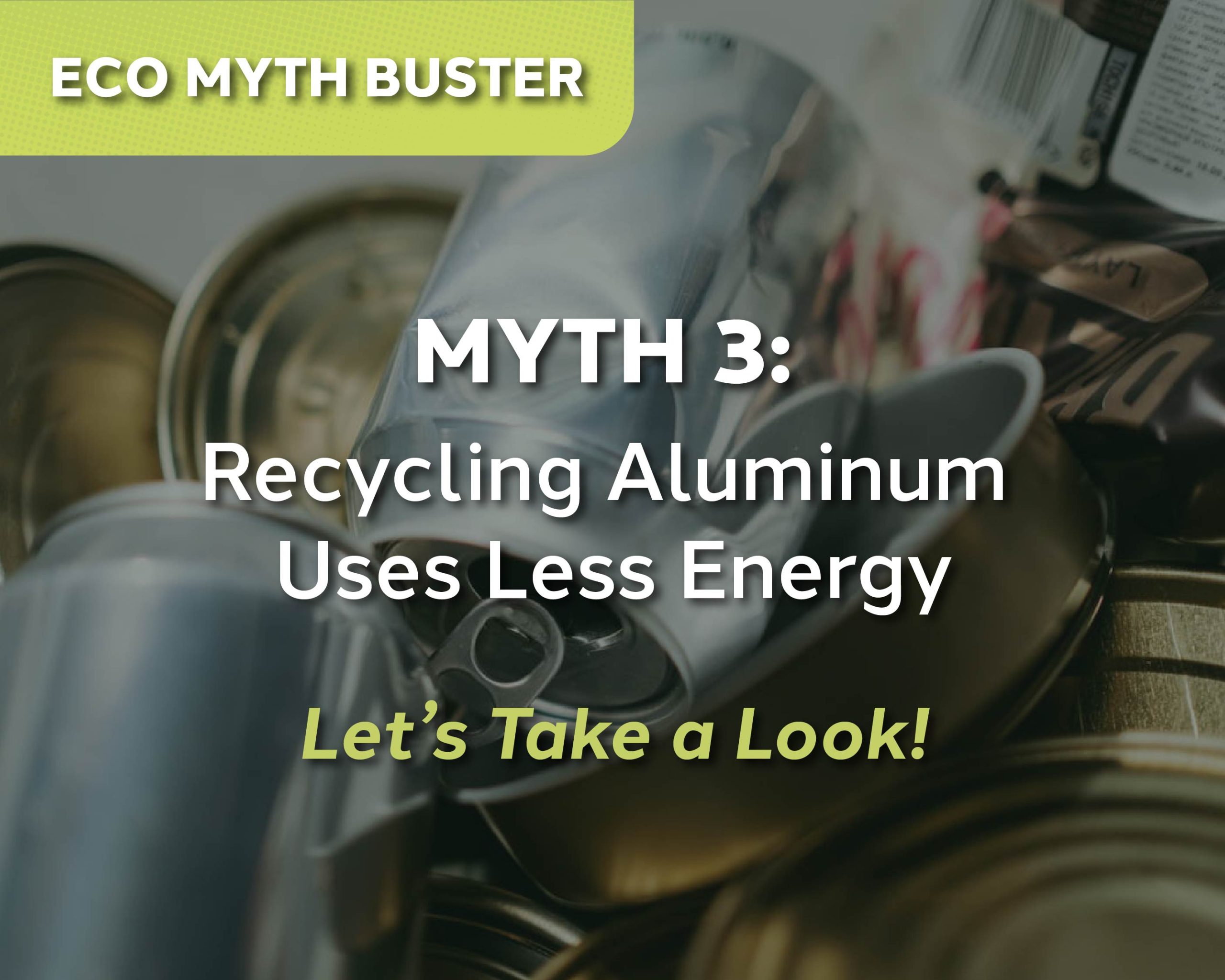Month: November 2025
Eco Myth Bust of the Month: Aluminum Recycling Really Does Save Energy

Eco Myth Bust of the Month: Aluminum Recycling Really Does Save Energy
Myth:
Recycling aluminum takes about the same energy as making new.
Fact:
Recycling aluminum uses only a fraction of the energy required to produce primary aluminum and dramatically cuts emissions. That’s a win for the planet, and for truly circular packaging.
Aluminum’s reputation for high energy use comes from how primary metal is made: refining bauxite and smelting it into aluminum is power-intensive. But once aluminum exists, it can be remelted again and again without losing performance. Remelting scrap back into new can sheet takes vastly less energy than producing virgin metal, which is why recycling is the real efficiency play.
This matters for two reasons. First, lower energy equals lower carbon, most manufacturing emissions track closely with energy use, so every recycled loop displaces a chunk of primary production and its footprint.
Second, aluminum’s high material value keeps it in the system. When consumers and brands put cans in the right stream, they’re feeding a market that actively wants this material, reducing landfill and strengthening the closed loop.
Here’s how that loop works: cans are collected via curbside or deposit programs and sorted at materials recovery facilities so beverage cans stay in a clean, high-quality stream. Mills remelt that scrap into ingot, roll it into coated can sheet, and manufacturers form new cans, often returning to shelves in weeks. The process preserves food-grade quality and line performance: seam integrity, barrier properties, and print results remain strong, whether the can includes recycled content or not.
What brands can do now:
- Specify recycled content and confirm suppliers’ closed-loop programs.
- Design for recyclability; use inks, coatings, sleeves, and labels that separate cleanly.
- Educate on-pack: “Please recycle, this can becomes a new can.”
What consumers can do now:
- When in doubt, recycle the can, aluminum is widely accepted.
- Keep it empty and place it loose in the bin (no bags).
- Choose beverages in aluminum to support a system that already works.
Bottom line: High material value + major energy savings = a clear incentive to keep cans circulating. Recycling aluminum doesn’t “use about the same energy”, it uses far less, delivering real climate benefits without compromising product quality or speed to shelf.
Ready to reduce your packaging footprint without slowing production? Contact Can-One USA to start a run!

